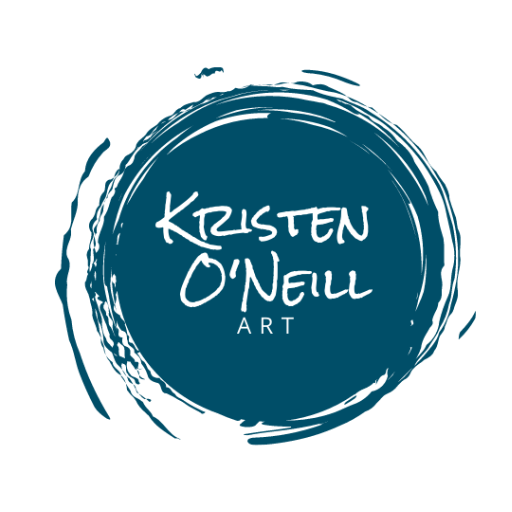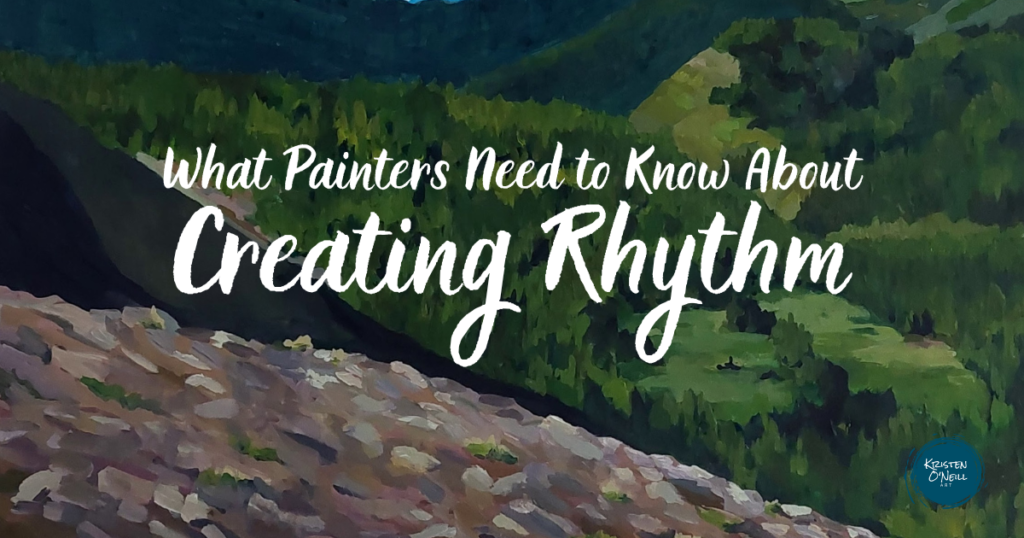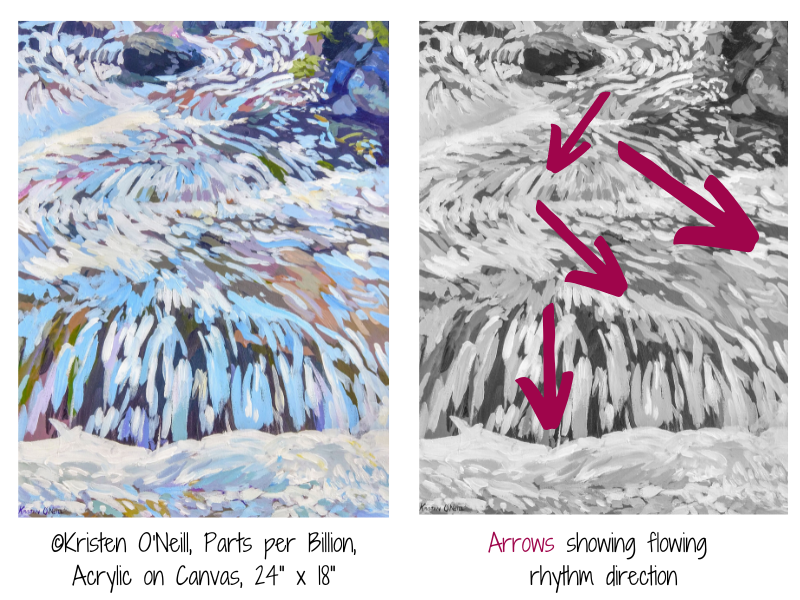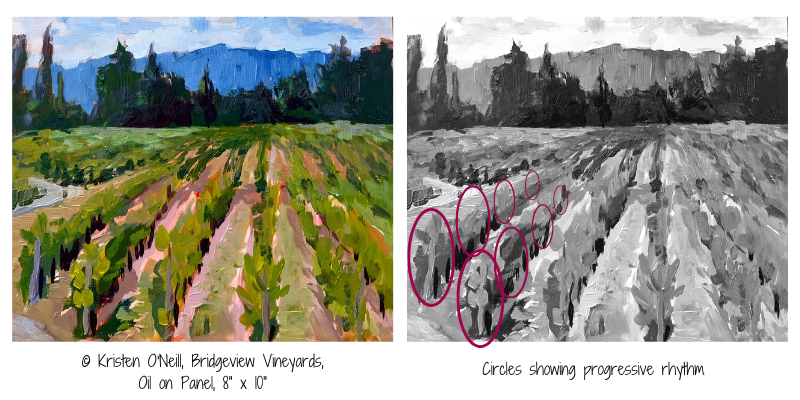What is Rhythm in Paintings?
Rhythm is a visual tempo in an artwork. Creating rhythm in paintings causes a sense of movement or action to be suggested. Viewers love the sense of predictability and satisfaction they feel from understanding the composition. It can help manage to keep chaos from being overwhelming, by allowing a structure for understanding. Like music, it creates a beat that we can use for the foundation of understanding what is going on in the painting.
How to Create Rhythm in Paintings
There are several different types of rhythm. Artists use a combination of some of the elements of art (color, form, line, shape, space, texture, or value) to create a rhythm. Rhythm is created by these things repeating in a predictable way. One of my favorite paintings to discuss rhythm is Nude Descending a Staircase No. 2, by Marcel Duchamp, painted in 1912.
In this painting, the rhythm creates a perceived movement of the figure. It adds the dimension of time to the painting. We can see a repetition of lines, yet they vary in angles, balancing this painting between chaos and order. There is also space around the figure behind and in front of it. We aren’t awkwardly cutting off body parts (a big no-no to the viewer). So this rhythm doesn’t have to be constant throughout. Notice that in the darker parts of the composition there is a different rhythm of shapes of stairs repeating. Along with lines repeating, we have value shifts, and shapes that help reinforce this rhythm.
Let’s explore the types of rhythm we often see in artworks.
Kinds of Rhythm in Paintings
Alternating Rhythm –
Alternating rhythm is repeating more than one element in a design – in an alternating pattern. Example: black and white squares alternating make a chess board, or a tiled kitchen floor.
Flowing Rhythm –
In flowing rhythm, the repeating elements follow a bend, curve, or undulations. This is a common rhythm in nature. In this painting, the flow of the water is shown by the reflections and white water. The curving strokes of paint, near similar in color, create the rhythm. Imagine, if one of those painting strokes suddenly crossed the other. It would destroy the flow, bringing the eye to abrupt halt, instead of leading the eye further.
Progressive Rhythm –
Progressive rhythm is when one characteristic changes as the motif repeats. Example: a fence appears to recede as the height of the lines of the fence become smaller as the fence moves backward in the composition. We see progressive rhythm often in perspective. In the painting below, the grape vines become progressively smaller as they recede. We also have a rhythm of the rows of grape plants.
Regular Rhythm –
Regular rhythm is where the elements repeat with the same intervals. One thing to be aware of with regular rhythm is that it can become boring if you aren’t careful. While we love a bit of predictability, we don’t want to feel like it is unnecessary to keep looking at the artwork. If the pattern of the rhythm is visually interesting in itself, that goes a long way. Often the rhythm is just one section of the painting.
Random Rhythm –
Random rhythm repeating elements with no specific regular interval. A great example of this is a tree line. We can more expect trees, and know about how big to expect the trees to be, and yet the exact interval is perceived as random. If we create a tree line with equally spaced trees it automatically reads as a plantation, not a natural forest. Stars are also a great example of random rhythm. Even just as little pinpoints of light, the stars need to be “randomly” spaced to read as realistic.
Questions to Ask Ourselves
Now that we have reviewed several ways to create rhythm in paintings, let’s figure out how to apply this as we work.
- What is repeating in the painting?
- What type of rhythm would make sense to use?
- Which elements of art would work the best to create the rhythm? (Color, form, line, shape, space, texture, or value)
Happy painting!





